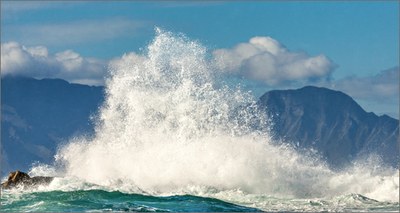Energy: ENEA launches first national survey on marine energy
29/7/2021
 ENEA launches the first national survey on new technologies to exploit energy from tidal currents and sea waves, as part of a campaign conducted jointly with Ocean Energy Europe (OEE), European Energy Research Alliance (EERA) and ETIP Ocean. The survey takes place simultaneously in the other 13 EU countries of the European task force of energy from the sea, led by ENEA for Italy.
ENEA launches the first national survey on new technologies to exploit energy from tidal currents and sea waves, as part of a campaign conducted jointly with Ocean Energy Europe (OEE), European Energy Research Alliance (EERA) and ETIP Ocean. The survey takes place simultaneously in the other 13 EU countries of the European task force of energy from the sea, led by ENEA for Italy.
"The task of leading the task force is the result of many years of work alongside Italian universities and industry on new technologies and the calculation of sea energy potential", said Gianmaria Sannino, head of the ENEA Laboratory of Climate Modeling and Impacts and chair of the European Task Force.
"The task force will have the task of 'transitioning' the sector of marine energy from the current phase of technological development of devices to full commercial operativity by increasing the level of technological maturity of single experimental devices and of the entire industrial chain, the search for financial instruments and the development of environmental standards and certifications ”, Sannino said.
“Thanks to this survey we will assess the technological progress of the projects and the funds and incentives available at European level. There will also be a focus on all the crucial aspects concerning the launching phase of the devices, like the availability of natural laboratories, the network infrastructure, the authorization procedures and the presence or absence of a maritime spatial planning”, explained Maria Vittoria Struglia, researcher at the ENEA Laboratory of Climate Modeling and Impacts.
ENEA activities on marine energy are funded by the Program agreement with the Ministry of Economic Development, which provide for the construction of a scale prototype of the PeWEC[1], in collaboration with the Polytechnic of Turin, and its use in laboratory tests in extreme wave conditions. The ongoing research activities aim at reducing the cost of the energy produced, until reaching an interest value for real applications in an insular environment.
The activities include the study of the predictability of the state of the sea and consequently of the marine energy available in the Mediterranean basin, on a seasonal time scale. “Through these studies it will be possible to predict well in advance Mediterranean hurricanes, the so-called medicanes which, due to their size and strength, can put offshore infrastructures at risk.
In addition, they enable us to know in advance the amount of energy available seasonally and give us the the possibility of estimating a season in advance the amount of energy available
The European Union has very ambitious objectives in terms of combating climate change, namely zeroing greenhouse gas emissions and achieving climate neutrality by 2050. "Meeting these objectives depends also on the sea, since offshore renewable energy technologies have the greatest potential to scale up, as highlighted by the EU strategy published at the end of 2020 ”, Sannino said.
The time schedule of the European Union estimates the marine energy produced to be 100 MW by 2025, 1 GW by 2030 and 40 GW by 2050. "This fast pace implies a massive step change in less than 30 years, with a unprecedented speed in the development of energy technologies: a factor of 400 between 2025 and 2050. And, thanks to technological research, the cost of tidal flow energy is expected to rise from 15 ct € / kWh in 2025 to 10 ct € / kWh in 2030; while the cost of electricity from waves is estimated to be 20 ct € / kWh in 2025, 15 ct € / kWh in 2030 and 10 ct € / kWh in 2035 ", Sannino concluded.
The exploitation of marine energy is gaining momentum in many parts of the world, particularly in the United States of America, China and Canada. But Europe remains a leader in terms of technology and the ability to exploit energy from the sea, as shown by these data: 66% of the patents for tidal energy and 44% of those for wave energy are from European companies and 70% of the global energy capacity of the oceans has been developed by companies in the European Union.
The availability of marine energy resources in Europe is greater along the Atlantic coast but the Mediterranean Sea also offers interesting opportunities both for energy production and technologies development. ENEA estimates that the areas with the highest potential for wave energy are the western coasts of Sardinia and the Strait of Sicily, where the average energy flow oscillates between 10 and 13 kW / m. In the context of the energy transition towards low-carbon technologies, marine energy production in the Mediterranean seems today more than ever a significant opportunity for growth for our country.
To take part in the survey and for more information write to: energia.mare@enea.it
For more information:
https://setis.ec.europa.eu/implementing-actions/ocean-energy-implementation-working-group_en
OEE - Key trends and statistics 2020 https://www.oceanenergy-europe.eu/wp-content/uploads/2021/03/OEE-Stats-Trends-2020.pdf
[1] PeWEC (Pendulum Energy Converter) is designed to make the most of all the components of the wave motion which rocks a hull that contains the device which extracts the energy.
